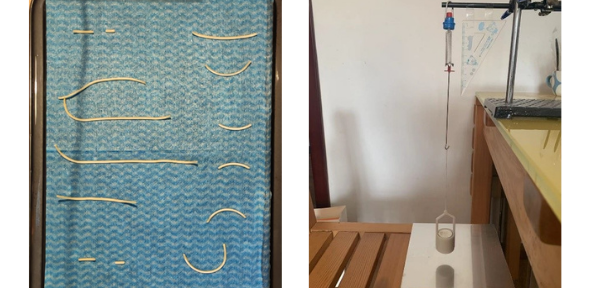
Heavy Parachutes, Branching Light and Rolling Pasta… These are not creative code names but some of the problems solved by physics student teams to win physics fights leading to the coveted International Physicists Tournament (IPT).
Despite the extremely limited circumstances, we have managed to design and carry out several experiments, using the practical skills we have learnt in the course. We got a chance to not only expand our knowledge in physics but also have lots of fun! Yansheng Zhang
Earlier this month, the Cambridge students team representing the UK and led by Yansheng Zhang (2nd year Nat Sci, Trinity College) competed in the 13th IPT, finishing in 7th place among the 12 international teams.
The IPT is an annual competition gathering university student teams from all around the World for unique "Physics Fights". Every year, the organizing committee publishes in advance a set of open-ended and research style questions inspired by everyday phenomena that could be rigorously explained/modelled using physics. Questions range from reconstructing the sound of a thunder from an image/video and building an optical compass using skylight polarization to investigating how a spaghetti could roll on a wet cloth as it absorbs water and modelling how a mousetrap chain reaction works.
These questions are investigated both experimentally and theoretically by the teams during the preparation stage, and the competition itself takes place in the form of physics fights where the solution presented by one team is challenged by another. It requires a combination of convincing physical arguments, strong communication skills, and smart tactics. In the end, the score for each team would be graded by a panel of jurors.
To enter the final stage of the competition, which took place online from 1st to 4th July, the Cavendish team had had to go through a national selection, also competing against 4 other teams from Cambridge. They won the selection with their report on the “Heavy Parachute” problem. where they investigated the magnetic braking of falling magnets both experimentally (using homemade setups) and theoretically.
Followed months of intensive preparations, homemade experimentations, and practice for the six students. During the main competition, which was hosted by the University of Warsaw, the students went through four rounds of physics fight, meeting teams from the USA, Switzerland, Colombia, and Ukraine. They also presented some of their problems in the IPT conference, where Jonathan Chee Xian Kuan’s “Branching Light” won the best presentation.
“It has been a challenging year, but the IPT still offered us an enriching experience,” said team captain Yansheng Zhang. “Despite the extremely limited circumstances, we have managed to design and carry out several experiments, using the practical skills we have learnt in the course. We got a chance to not only expand our knowledge in physics but also have lots of fun!
“We would very much like to participate in future years, and we hope to get more physics undergraduates across the UK involved.”
The full team representing the UK:
- Yansheng Zhang (Team captain, 2nd year Nat Sci, Trinity College):
- Aneesh Agarwal (1st year NatSci, Sidney Sussex College)
- Jonathan Chee Xian Kuan (1st Year Nat Sci, St-Edmund's College)
- Khoi Le Nguyen Nguyen (2nd year NatSci, Peterhouse)
- Xavior Xuchen Wang (1st year NatSci, St Edmund’s)
- Peter Yang (1st year NatSci, Peterhouse)
The team would like to acknowledge and thank Katie-Lou White (3rd year Undergraduate reading Physics at Churchill College) and member of the local organizing committee Dr Anastasiia Vasylchenkova (Leverhulme Trust Early Career Fellow at UCL), for their help throughout the competition.
For more information, visit the IPT official website.
Images:
Lead: Experimental Images of Branched Flow of Light Waves / Experiment Set-up
2 and 3: Some funny shapes the spaghetti can contort into when not properly tamed / The setup used to quantitatively investigate the magnetic braking force in the problem “Heavy Parachute”. A rare earth magnet was loaded on a spring and made to oscillate above a conductive plate. The damped oscillation of the magnet can be used to verify our simplified theory for magnetic braking. Images from Yansheng Zhang.

